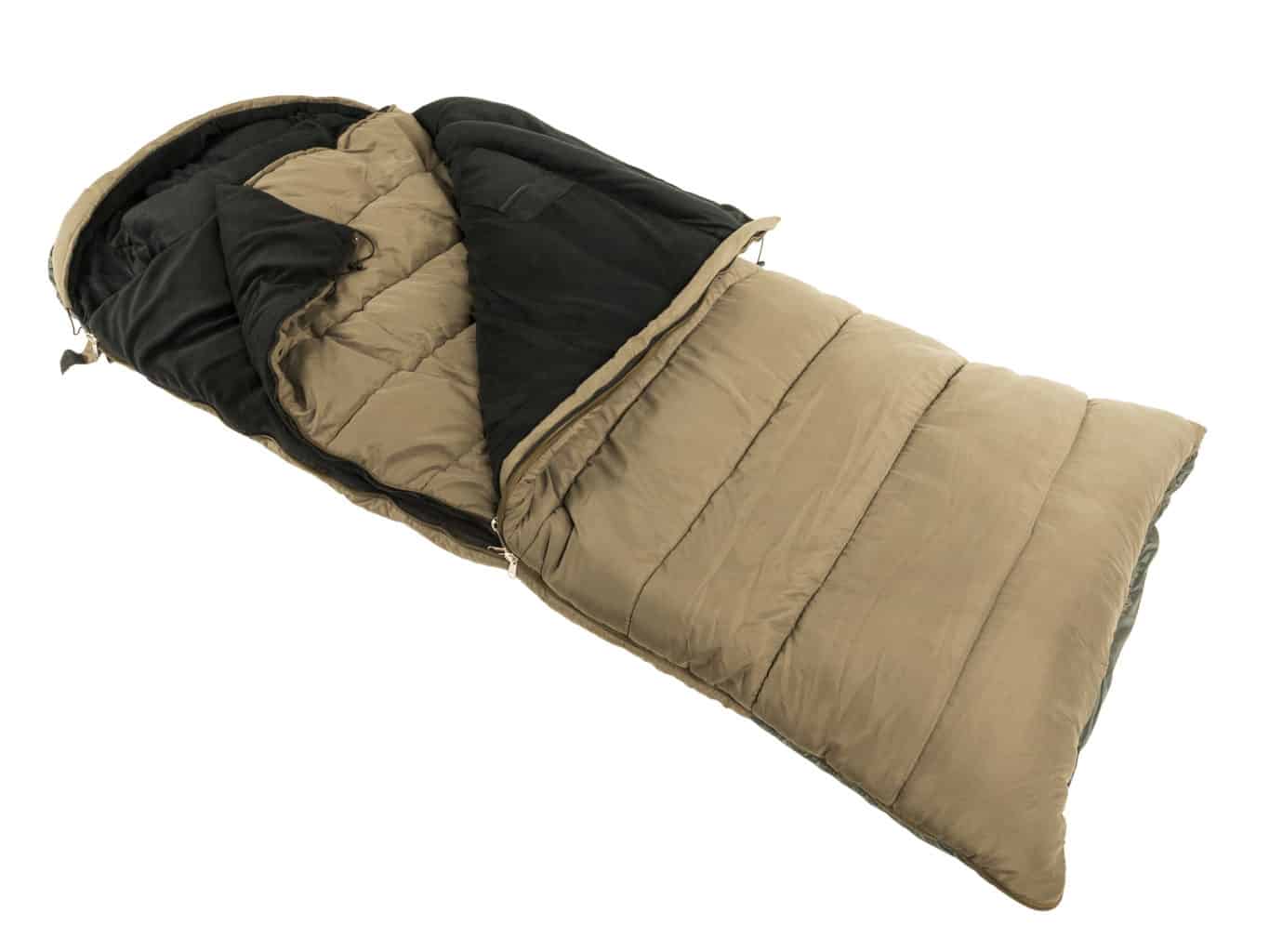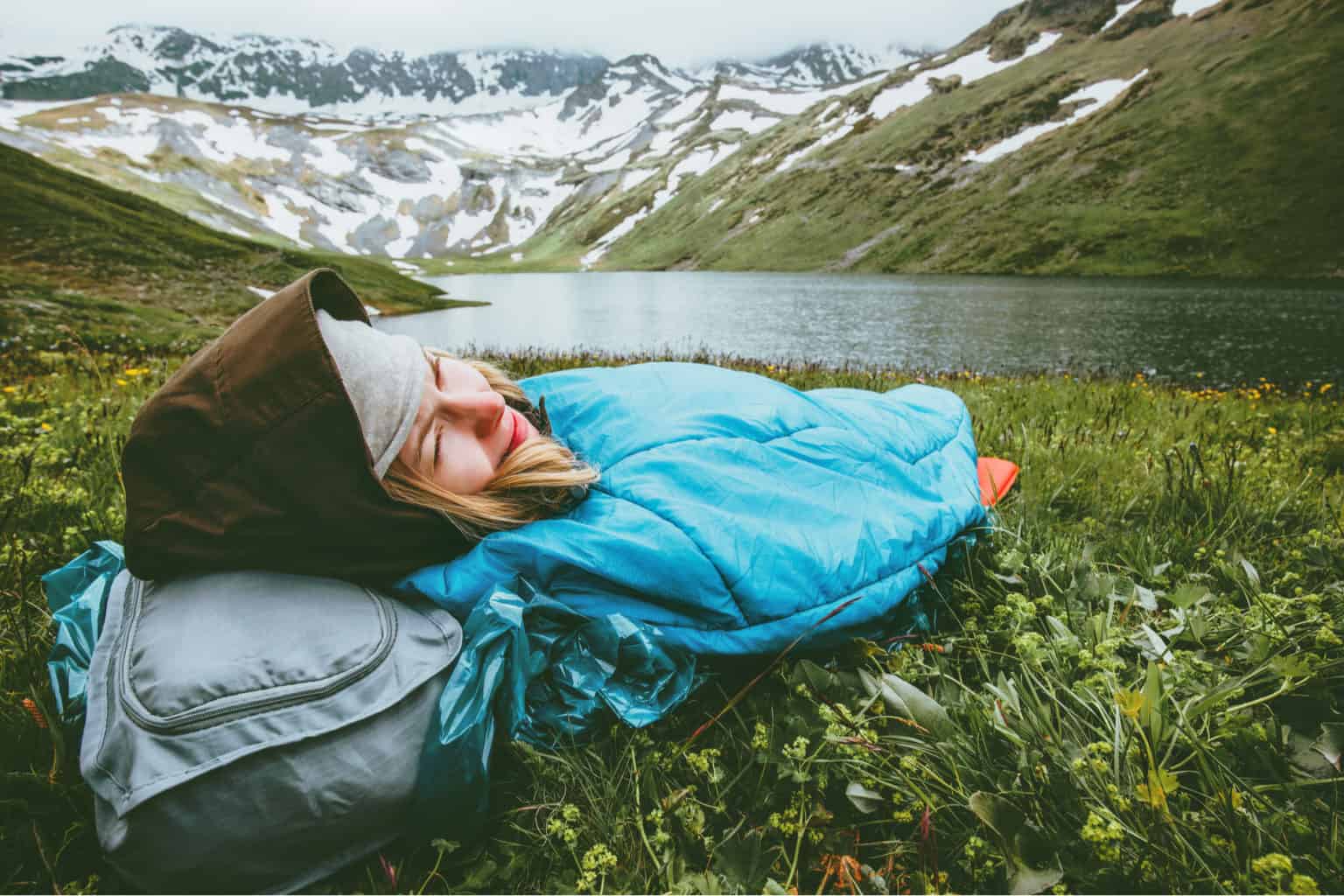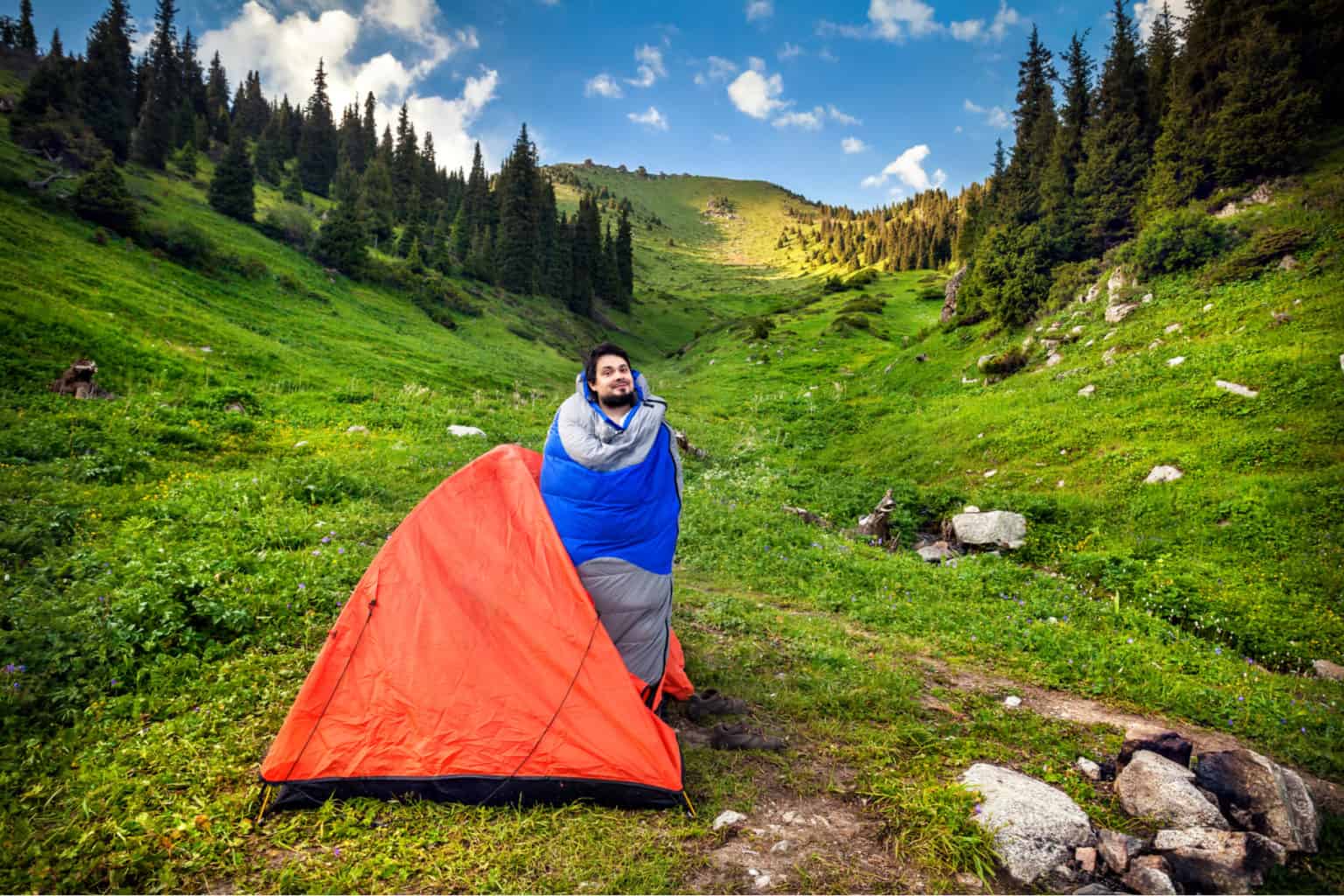If there’s a single most underrated piece of outdoor gear, it’s the sleeping bag liner. Often overlooked by many hiking enthusiasts, this unsung hero of the outdoor sleep systems acts as the additional barrier between you and your sleeping bag.
However, do these things actually work? Are they worth it? Should you get one for yourself? Which ones are the best? In this article, we’ll be taking a closer look at this underestimated camping accessory with the ultimate goal of helping you decide whether you should upgrade your hiking sleep system with one of them or not.
Table of Contents
- 1 What is the Point of a Sleeping Bag Liner?
- 1.1 Insulation
- 1.2 Cleanliness
- 1.3 Warm-Weather Sleeping
- 1.4 Protection
- 2 What is the Best Material for a Sleeping Bag Liner?
- 3 Can You Sleep in a Sleeping Bag Liner?
- 4 Can I Make a Sleeping Bag Liner by Myself?
- 5 Are Sleeping Bag Liners Worth It?
- 6 The Conclusion
- 6.1 Share the love:
What is the Point of a Sleeping Bag Liner?
Once you get to know a bit more about the benefits that come with using one of these products, it suddenly becomes a lot easier to understand why so many campers and hikers love them.
Insulation

During winter hikes or colder nights, sleeping bag liners can provide their users with the additional warmth they need to stay cozy. Putting one of these into your sleeping bag is just like when you’re layering clothes – an additional layer helps with trapping body heat and thus keeps you warmer.
Obviously, not all sleeping bag liners provide the same amount of warmth. How much additional warmth a particular model will provide always depends on the material and construction (more on that later).
Cleanliness
After a long hike through the wilderness, you may not have the nerves to thoroughly clean your dirty, smelly feet. You also may not want to get inside a dirty sleeping bag and spend the night there. The solution to this issue is called the sleeping bag liner – it keeps the sleeper’s dirt and sweat away from the sleeping bag.
Once you’re back home, you can simply wash the liner in your washing machine and it will be ready for the next backcountry adventure. Keep in mind that washing a sleeping bag requires a lot more effort and damages the bag over time.
Warm-Weather Sleeping
When you’re sleeping under the stars on your summer hike, your sleeping bag may start to feel a bit too toasty. Even if you unzip it, there’s still a pretty good chance you won’t be able to sleep comfortably – you’ll feel like a cooked potato and keep sweating during the night.
On such occasions, a breathable, lightweight liner is everything you need in order to sleep comfortably (more on that later). In addition, packing just the liner and not the bag is a great way to cut down on weight.
Protection
 A sleeping bag liner can come in very handy when you’re visiting hostels or mountain huts during your travels. Basically, it can act as a barrier between you and bed bugs or grimy blankets.
A sleeping bag liner can come in very handy when you’re visiting hostels or mountain huts during your travels. Basically, it can act as a barrier between you and bed bugs or grimy blankets.
In fact, a lot of mountain huts and hostels everywhere around the world (particularly in Europe) require guests to bring their own liners in order to protect both themselves and the future users of the same beds.
What is the Best Material for a Sleeping Bag Liner?
Is your first and biggest priority adding as much warmth as possible to your sleeping bag? If that’s the case, your best bet is to pick a liner manufactured from merino wool, thermal synthetic material, or microfleece/microfiber.
On the other hand, if you need a liner only to keep your sleeping bag clean (as well as to enjoy more comfort while sleeping), a silk liner can do the trick. This material is also very compact, and this can come in very handy on longer hikes.
Another important thing to mention here is that silk liners aren’t really made to keep their users warm. They’re meant to keep your sleeping bag clean – it’s as simple as that. Any additional warmth they provide is an extra bonus.
Are you looking for the absolute warmest liner possible? If so, make sure to check out the products from Sea to Summit’s Thermolite Reactor range. Some of these add over 30°F of warmth to the bag, which is very impressive and could even turn you into a fan of wintertime hikes. The Thermolite fabric’s ability to keep the liner’s user so warm is due to its use of hollow-core fibers that trap body heat.
Here’s a handy chart that shows the advantages of the most popular sleeping bag liner materials:
Cotton | Not really breathable or moisture-wicking and quite bulky. Good for regular traveling. |
Silk (~5°F) | Adds minimal warmth but wicks moisture and breathes well. Very compact, light, and soft. |
Merino Wool (5-10°F) | Moisture-wicking and exceptionally soft. Can be quite expensive. |
Microfleece/Microfiber (5-10°F) | Very comfortable. |
Thermal Synthetic (~25°F) | Moisture-wicking, warm, breathable, as well as very comfortable. |
Can You Sleep in a Sleeping Bag Liner?
There is no simple answer to this question – it all depends on where and when are you planning to spend the night.
 Using one of these products as a stand-alone “sleeping bag” is generally not advised. The comfort and warmth provided by a regular sleeping bag are unmatched, with the liner being more of its supplement than a substitute. This is especially true when you’re sleeping under the stars – you never know how chilly the night may actually become.
Using one of these products as a stand-alone “sleeping bag” is generally not advised. The comfort and warmth provided by a regular sleeping bag are unmatched, with the liner being more of its supplement than a substitute. This is especially true when you’re sleeping under the stars – you never know how chilly the night may actually become.
However, if your camping spot’s location is humid and hot, you won’t make a mistake by using just the liner. In fact, bringing only the liner and not the bag is a wise decision if you’re only hiking during warm summer months in the countryside (so, not in the mountains). The same is true if you’re planning to sleep exclusively in hostels during your summer hiking trip.
And, as we’ve mentioned above, using just the liner instead of the sleeping bag is a great way to cut down on weight. Overall, hiking enthusiasts can use liners with or without their sleeping bags – it all depends on the circumstances.
Can I Make a Sleeping Bag Liner by Myself?
In case you want to make your sleeping bag warmer and you’re a crafty person, you could try making a sleeping bag liner on your own. Sewing one of these things shouldn’t be too difficult – you simply have to measure the fabric you’ll be using, fold it together, and then just sew the sides and the bottom.
Even though this is an incredibly easy thing to do, keep in mind that you can buy the most basic sleeping bag liner for as little as $10. While the one you make by yourself may turn out to be warmer than the cheapest liner from the store, it may also turn out to be very heavy.
Are Sleeping Bag Liners Worth It?
A lot of trekking enthusiasts are looking for ways to increase the warmth of their sleeping bags without having to replace their old model with a brand new & expensive one. If you’re a car camper, this is not a big issue – you can simply throw in a bunch of blankets and extra clothes in your car.
 However, things are totally different for backpackers. They just can’t pack whatever they want – it’s a luxury that they simply don’t have. This is where both the good side and the bad side of carrying a sleeping bag liner comes into play.
However, things are totally different for backpackers. They just can’t pack whatever they want – it’s a luxury that they simply don’t have. This is where both the good side and the bad side of carrying a sleeping bag liner comes into play.
On one hand, these things add extra weight, and this can be of crucial importance on trips where every single ounce counts. Thru-hikers, like the ones traversing the Appalachian Trail, really have to weigh in the advantages and disadvantages of carrying a sleeping bag liner.
On the other hand, liners introduce a lot of advantages, most of which we’ve listed in the first part of this article. While it’s true that you should never rely on one of these products to stay warm during your cold-weather hikes, it is also true that the extra warmth the liners bring is not their only benefit. There are many other reasons because of which you’d want to bring a sleeping bag liner to your backcountry adventure, and they’re just as important.
So, in short, yes, they’re worth it – the extra weight of a liner is completely justified by its sheer convenience, practicality, and usefulness.
The Conclusion
There’s a lot of conflicting opinions about liners – some people swear by them, and some say they’re a waste of money as well as space in the backpack.
As far as we’re concerned, these simple camping accessories are actually very useful – not only do they add extra warmth to one’s sleeping bag, but they make the bag last longer by keeping it clean. In addition, the liners can also provide their users with better comfort, since many of them feel a lot softer on the skin than the fabric found inside many sleeping bags.
In summary, sleeping bag liners may not be necessary, but they’re certainly nice to have and can sometimes be extremely useful. If you decide to get yourself one, make sure to do some research first and get a model that suits your individual needs. In any case, remember to practice good winter safety and always test your trekking gear before heading out into the Great Outdoors.
 Leslie Gilmour
Leslie Gilmour
I love hiking. From the Camino de Santiago to the West Highland Way in Scotland or simply a great day hike on the weekend. Hiking refreshes me, my mind, and keeps my body reasonably fit. So far I have walked three Camino routes and many other long distance hikes in the UK, Canada, and around the rest of Europe. One of the best was my hike up Ben Nevis.
Share on Facebook
Share on Pinterest
Share on Twitter
Share on Email
Ten articles before and after
12 Best Ultralight Sleeping Bags for Hiking 2022
The 7 Best Sleeping Bag Brands in 2022
What is Munro Bagging? Munro Bagging for Beginners
Backpacking Sleeping Bag Under $100 for 2022
15 Best Cold Weather Sleeping Bags for Winter Camping 2022
10 Best Summer Sleeping Bags for Backpacking & Camping 2022
How to Choose a Sleeping Bag for Camping & Backpacking
10 Best Sleeping Bag Liners for Hot Weather [Backpacking and Camping]




 Mobile/What's App/Wechat
Mobile/What's App/Wechat E-Mail
E-Mail ADD
ADD




